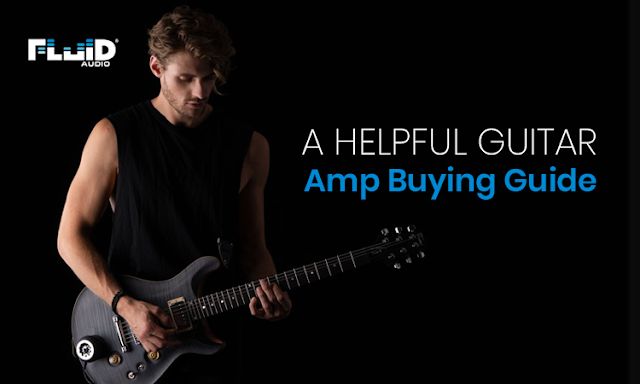A Helpful Guitar Amp Buying Guide
For rookies, choosing the first guitar amp can be as perplexing as choosing the first electric guitar. Picking up the right one is important as guitar players are inspired by their tones. Thus, an amp that provides the “right” tone will round out your ‘sound’ and elevate your performances.
When shopping for guitar products online or at a retail store, don’t take home the first one you are attracted to. Though it may feel really good to play, there are chances that when you use it at a gig or in the studio, the amp might not cut it.
We've put together a handy guitar amp buying guide to help you make the right decision when it comes to purchasing your first guitar amp.
Size and portability - When selecting your first guitar amp, it is best, to begin with choosing the best size. Guitar amps range from tiny microamps to giant rigs with multiple speaker cabinets. If you’re just starting out on guitar, opt for a small, portable practice amp like the Fluid Audio Strum Buddy. Being small in size, these amps offer amazing convenience and are great for musicians who are mostly on the move.
Tube, Solid-State, or Digital – While tube technology is still considered the holy grail of guitar amplification, these days solid-state and digital amps offer excellent tone for a lot fewer bucks, and with fewer maintenance hassles. That said, tube tone is still considered the standard by many top players. So which one is right for you? We recommend a blind listening test, and let your ears be the judge.
Amp wattage – Choosing the right wattage for a guitar amplifier isn’t just a problem for beginners. Guitarists of all skill levels have this issue. They just need something that sounds good and has enough volume for bedroom-level practice. As a beginner, just look to amps in the 20-30-watt range. These basically practice amps, and even after you move up to a bigger amp for gigs you can continue to use them for low-volume playing. Most “pro” amps average 30-100 watts. Loudness doesn’t double when you double the number of watts. A 30-watt amp is only 5 decibels quieter than a 100-watt amp.
Speaker size – Different size speakers produce different sounds. The standard size for guitar speakers is twelve inches. Larger amps don’t have bigger speakers; they just have more of them. When choosing your speaker configuration, two factors to take into consideration are the wattage of the amp and impedance. Popular speaker configurations include one 12-inch speaker, two 12-inch speakers, and four 12-inch speakers. For most gigs, one 12-inch or two 12-inch speakers are fine. You may even see ones with two or even four 10-inch speakers too.
Features – These days, the majority of amps, even the smaller ones, are outfitted with a constellation of knobs, switches, jacks, and buttons. Alluring, as they may seem, you don’t want to fork out extra for features you’ll never use. Look out for channels, built-in effects, inputs and outputs, and, modelling functions.
Channels - Most amps have at least two channels—a clean mode and an overdriven one—with many bigger models upping the ante with even more. But if you’re simply after sparkling cleans and saturated distortion, two channels are all you need. If you’ll be playing live, then be sure to find out if the channel footswitch is included, or, if you must purchase one separately.
Effects – The common built-in effect on analog amps is reverb. However, hybrid and digital amps can come with a multitude of effects from ordinary and outrageous.
Inputs and outputs – Take a look at the back of an amplifier and you’ll find input and output jacks of all sizes. This is where you’ll hook up other devices, such as a footswitch to control your onboard effects, external speakers for more might, and pedals to daisy-chain into an effects loop. Some models also come with outputs for recording or for plugging into a mixer.
Now that you’re thorough with the fundamentals of a guitar amp, we hope you can pick up the right guitar amplifier to get your musical message out to your audience. Remember not to rush, find out what others are saying about various models, and understand that this first amp will almost assuredly not be your last amp so ‘low and slow’ is the name of the game.



Comments
Post a Comment